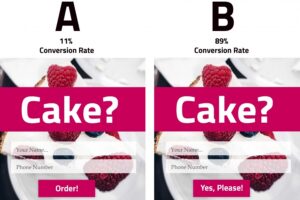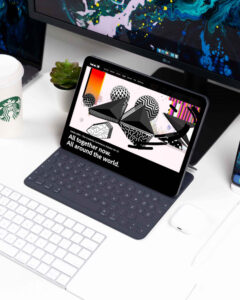Why your images might not be legal?
Have you ever used a stock photos image for your business? Do you usually upload royalty-free images with your articles, but never actually bothered to check if you have a license for them or any proof of when you downloaded them?
Or maybe you just use Google images thinking that if you found them online, surely they must be legal to use. If any of these cases apply to you, do yourself a huge favor and read through this article. As many entrepreneurs come to learn the hard way, unknowingly illegally using stock photos is a serious business that can lead to lawsuits, monetary damages, and even criminal charges. And no – if an image is online, it doesn’t mean it’s free or legal to use. More on that here:
The truth about stock photos
Meet Allison Puryear, a self-made businesswoman who helps others with practice-building and turns their dream jobs into a reality. In March of this year, Allison came out about how she got sued – yes, you read that right – for using one picture she acquired through a seemingly legitimate stock photo website. A few exorbitant legal fees later, Allison finally managed to resolve the issue with the help of her malpractice insurance, after months of trying to get a settlement. The cause of all this hassle was a simple image of an Asheville skyline, which Allison had been using for years on her business Facebook page. As much as I’d like to say that this was an isolated incident, it really isn’t – these things do happen and a lot more often than you’d imagine. The woman also later found out from one of her lawyers that the photographer who pressed charges might have been deliberately planting copyrighted images on free stock photo websites and tracking them to sue later the ones who were using them. More on her story here: I Got Sued (For Something You’ve Done!).
Should I be worried?
Could the same thing happen to you? It’s possible, especially if you don’t know anything about copyright issues. Here are the most common illegal scenarios that most people partake in but are completely unaware of, ordered according to their likelihood of getting you into trouble:
– You download online images you find on Google search and use them for your blog, website or business (this is illegal; unless an image is a part of “public domain” you need a license to use it);
– Your license to use an image has expired (this is not the case with royalty-free images, but otherwise it puts you at risk for legal action);
– Your website is non-commercial, but you still use images without a license (again, all photos you use must be correctly licensed if you want to avoid potential lawsuits, irrespective of whether or not you’re making money off the website);
– You’re using an image that you paid for, but your supplier doesn’t offer legal protection (this is very common because most of us don’t bother to read the terms and conditions – more on how to properly read license agreements later);
– You paid for the photo, but have no proof or documentation of the legal download – always make sure you screenshot yourself when downloading an image from stock photo websites (even if it’s licensed!); the burden of proof to show you acquired the picture legally is on you, not the supplier.
I use royalty-free images or Creative Commons – why should I care?
What’s in a name? A lot, actually. You might think that royalty-free stands for the ability to use an image legally for free. It doesn’t. Royalty-free just means that if you have paid once for the license, you can keep using it without paying any extra fees. We talked earlier about expiring licenses; with royalty-free, you don’t have to worry about that – once you paid for your license, you can use it without having to pay additional royalties. But that’s it. Royalty-free does not mean the image is necessarily free or that the license offers legal protection. Similarly, Creative Commons (a non-profit organization that releases images with licenses) does not automatically cover all legal risks. Most CC licenses do have restrictions on how the image can be used.
I’d also like to briefly touch on the model and property releases here. If an image has a trademark on it, you’ll need a property release that ensures you can use it legally. The same thing goes for images of a model or images that depict an individual in them. For these to cover legal protection, you need a model release that offers permission from the person to use it commercially. Although most stock photos should ask the models for this release, there are cases where this doesn’t happen. And the one who is legally liable is whoever uses the photo (again, not the supplier). Property and model releases are important to learn about because they’re not always guaranteed when using a Creative Commons license.
Does this mean I can’t actually find free images that I can legally use?
No. There are websites that provide images under legal protection for free. The only downside might be that the quality of the photos is lower than that of paid-for pictures. And you need to be very careful when reading their license, or any license for that matter. This brings me to my next point…
How to properly read a license for using photos
The key to avoiding legal lawsuits is to comply with the terms of the agreement of your photo’s license, whether it was purchased or free. Do not brush over these terms if you see buzzwords like “royalty-free,” “free images,” “free stock photos” or anything of the sort. Instead, read the license carefully – you need to make sure that it offers you legal protection (also known as indemnification) for using the image both commercially and for personal use. Also, the terms should include model or property releases when necessary or specify if these images can be used commercially and within what limits. For instance, you cannot use most model pictures in a way that makes the depicted individual appear in a bad light or under offensive circumstances. Here are the types of licenses you’ll encounter:
ShareAlike – allows you to legally distribute, display, copy or modify the image as long as it is within the terms specified by the license (no attribution required);
Attribution – allows you to legally use the image as long as you give credit to the author, without suggesting that he or she endorses the use of their picture;
NoDerivatives – allows you to use and share only the original copy of the image, without any modifications (unless you have received permission);
NonCommercial – allows you to distribute, copy, modify (unless the photo is also under NoDerivatives) and display the image exclusively for non-commercial purposes.











